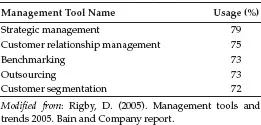
This is a test
- 698 pages
- English
- ePUB (mobile friendly)
- Available on iOS & Android
eBook - ePub
Szycher's Practical Handbook of Entrepreneurship and Innovation
Book details
Book preview
Table of contents
Citations
About This Book
This practical and comprehensive handbook offers step-by-step instruction, guiding entrepreneurs of innovative technology startups all the way from idea to profitability. With its easy-to-follow format aimed at both experienced as well as novice entrepreneurs, this book covers all technical, financial, legal, and governmental hurdles facing startups. It discusses common causes of business failure and points out the pitfalls to avoid in getting innovative technology successfully to market.
Frequently asked questions
At the moment all of our mobile-responsive ePub books are available to download via the app. Most of our PDFs are also available to download and we're working on making the final remaining ones downloadable now. Learn more here.
Both plans give you full access to the library and all of Perlego’s features. The only differences are the price and subscription period: With the annual plan you’ll save around 30% compared to 12 months on the monthly plan.
We are an online textbook subscription service, where you can get access to an entire online library for less than the price of a single book per month. With over 1 million books across 1000+ topics, we’ve got you covered! Learn more here.
Look out for the read-aloud symbol on your next book to see if you can listen to it. The read-aloud tool reads text aloud for you, highlighting the text as it is being read. You can pause it, speed it up and slow it down. Learn more here.
Yes, you can access Szycher's Practical Handbook of Entrepreneurship and Innovation by Michael Szycher in PDF and/or ePUB format, as well as other popular books in Business & Management. We have over one million books available in our catalogue for you to explore.
Section IV
Classical Initial Decisions
11
Strategic Planning for Startups
Plans are nothing. Planning is everything.
—Dwight D. Eisenhower
11.1 Introduction
Why do some companies succeed while others fail? In the fast-evolving world of the Internet, for example, how is it that companies such as Yahoo, Amazon.com, eBay, Facebook, and Google have managed to attract millions of customers, while most others have gone bankrupt?
This chapter demonstrates that startups that develop and pursue a well-designed strategic planning policy display superior performance compared with their rivals. In this context, a strategy is a set of actions that founders take to increase their startup’s performance relative to rivals. If a startup’s strategy does result in superior performance, it is said to have a competitive advantage.
Thus, strategic planning is a tool for organizing the present on the basis of the projections of the desired future. That is, a strategic plan is a road map to lead an organization from where it is now to where it would like to be in 5 or 10 years.
It is necessary to have a strategic plan for your chapter or division. In order to develop a comprehensive plan for your chapter or division that includes both long-range and strategic elements, we suggest the methods and mechanisms outlined in this manual.
Your plan must be
•Simple to follow.
•Written logically and purposefully.
•Clear to everyone.
•Based on the real current situation.
•Given enough time to settle. It should not be rushed.
Over the past few decades, you may have witnessed an explosion in the use of management tools and techniques—everything from Six Sigma to benchmarking. Keeping up with the latest and greatest, as well as deciding which tools to put to work, is a key part of every leader’s job. But it’s tough to pick the winners from the losers.
As new management tools appear every year, others seem to drop off the radar screen. Unfortunately, there is no official scorekeeper for management tools. Thus, choosing and using “fad management” tools can become a risky and potentially expensive gamble, leaving many business leaders stymied and confused.1
In 1993, Bain & Co., a leading management consulting company, launched a multiyear research project to get the facts about management tools and trends. The objective of the study was to provide managers with information to identify and integrate tools that improve bottom-line results as well as understand their strategic challenges and priorities.
Bain systematically assembled a database that now includes nearly 8000 businesses from more than 70 countries in North America, Europe, Asia, Africa, the Middle East, and Latin America. The Bain & Company’s 2005 Management Tools survey received responses from a broad range of international executives. To qualify for inclusion in the study, a tool had to be relevant to senior management, topical (as evidenced by coverage in the business press), and measurable. Bain focused on the most discussed management tools, as shown in Table 11.1.
TABLE 11.1
Most Frequently Discussed Management Tools

Would you like to know the surprising results? Out of all the management tools surveyed, 79% of respondents preferred strategic planning, followed closely by customer relationship management (CRM) at 75%. In fact, strategic planning is a long-time favorite tool, having been used by more than half of companies in every survey since Bain started this project. Not surprisingly, the most popular tools are the ones that create the highest returns and results-oriented ratings.2 See Table 11.2 for more details.
TABLE 11.2
Top Five Management Tools Ranked by Usage Rate

11.2 Strategic Planning for Startups
Strategic planning is the process used by an organization to visualize its desired future and develop the necessary steps and operations to achieve those aims. It directs managers to determine how they will be expected to behave. In order to determine the direction of the organization, it is necessary to understand its current position and the possible avenues through which it can pursue a particular course of action. Generally, strategic planning deals with at least one of three key questions:3
1.What do we do?
2.For whom do we do it?
3.How do we excel?
The key components of strategic planning include an understanding of the firm’s vision, mission, values, and strategies. (Often, a vision statement and a mission statement will encapsulate the vision and mission.)4
•Vision: Outlines what the organization wants to be or how it wants the world in which it operates to be (an “idealized” view of the world). It is a long-term view and concentrates on the future. It can be emotive and is a source of inspiration. For example, a charity working with chronic disease patients might have a vision statement that reads, “A world without disease.”
•Mission: Defines the fundamental purpose of an organization or an enterprise, succinctly describing why it exists and what it does to achieve its vision. For example, the charity might have a mission statement as “providing jobs for the homeless and unemployed.”
•Values: Beliefs that are shared among the stakeholders of an organization. Values drive an organization’s culture and priorities and provide a framework in which decisions are made. For example, “Knowledge and skills are the keys to success” or “Give a man bread and feed him for a day, but teach him to farm and feed him for life.” These example maxims may set the priorities of self-sufficiency over shelter.
•Strategy: Strategy, narrowly defined, means “the art of the general”—a combination of the ends (goals) for which the firm is striving and the means (policies) by which it is seeking to get there. A strategy is sometimes called a road map, which is the path chosen to plow toward your end vision. The most important part of implementing the strategy is ensuring the company is going in the right direction—that is, toward the end vision.
Unlike operational planning, which stresses how to get things done, and long-range planning, which primarily focuses on translating goals and objectives into current budgets and work programs, strategic planning is concerned with identifying barriers and issues to overcome. Managers are more likely to act on the assumption that current trends will continue into the future (steady state management), while entrepreneurs need to anticipate new trends and possible surprises that represent both opportunities and threats.
11.2.1 Competitive Advantage and Superior Performance
Superior performance is typically thought of in terms of one company’s profitability relative to that of other companies in the same or a similar kind of business or industry.5 The profitability of a company is measured by the return earned on the capital invested in the enterprise.6 The return on invested capital is defined as profit over the capital invested in the firm (profit / capital invested). By profit, we mean earnings after tax. By capital, we mean the sum of money invested in the startup—that is, stockholders’ equity plus debt owed to creditors.
This working capital is used to buy the resources a company needs to produce and sell products. A company that uses its resources efficiently makes a positive return on invested capital. The more efficient a company is, the higher are its profitability and return on invested capital. And your startup’s profitability—your return on invested capital—will be determined by your strategic planning.
A company is said to have a competitive advantage over its rivals when its profitability is greater than the average profitability for all firms in its industry. The greater the extent to which a company’s profitability exceeds the average profitability for its industry, the greater is its competitive advantage. A company is said to have a sustained competitive advantage when it is able to maintain above-average profitability for a number of years, and superior performance is profitability relative to the industry, as summarized in Table 11.3.
TABLE 11.3
“Advantage” Definition...
Table of contents
- Cover
- Half-Title
- Title
- Copyright
- Dedication
- Contents
- Author
- Section I Startups under the Microscope
- Section II Entrepreneurial Self-Assessment
- Section III Entrepreneurial Environment
- Section IV Classical Initial Decisions
- Section V Exit Strategies, AKA Harvesting
- Index